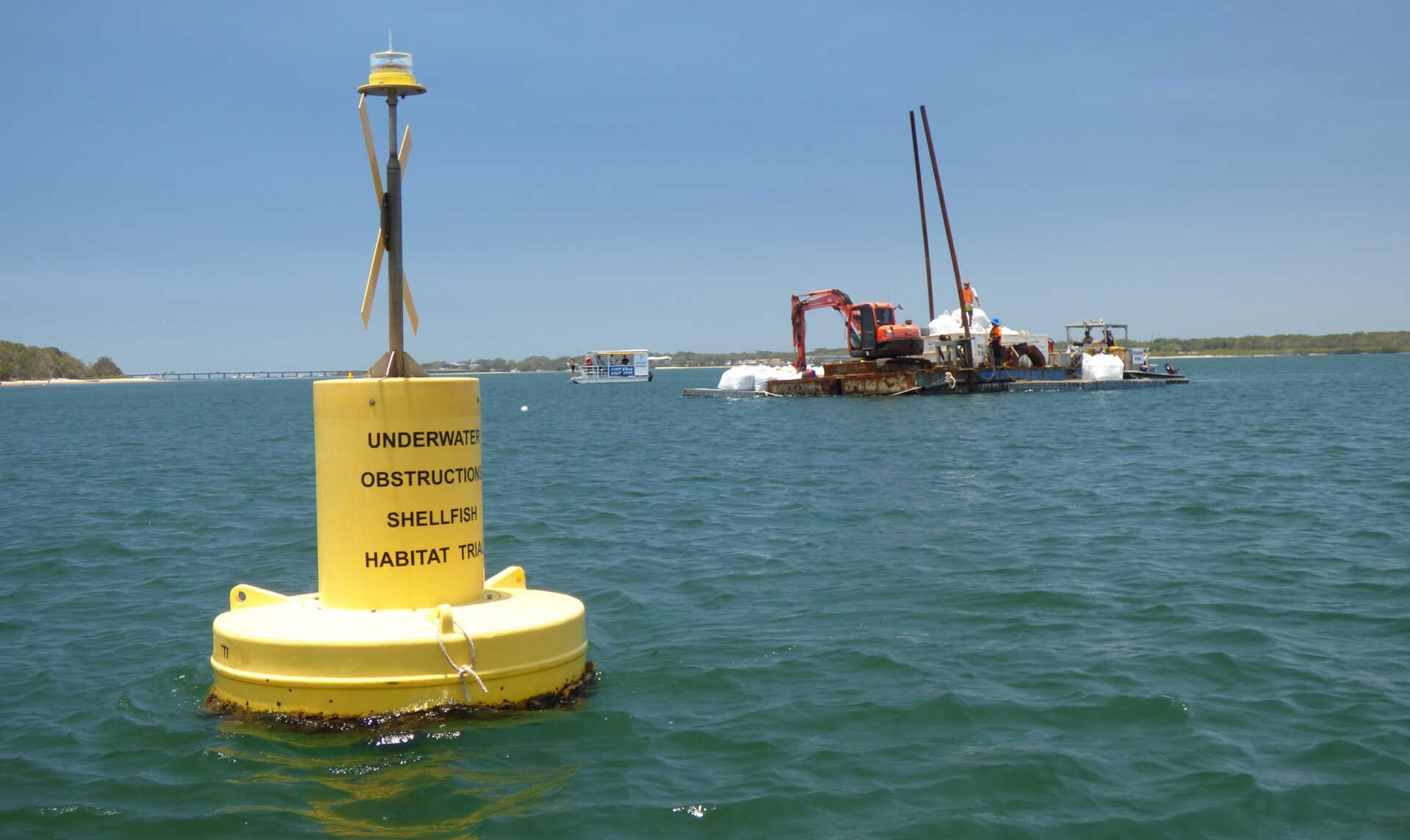Pumicestone Shellfish Habitat Restoration Continues

The project to restore the once magnificent shellfish beds of the Pumicestone Passage will be enhanced for the second time on Friday, December 6 with more reef structures of recycled shell being installed off Kakadu Beach.
Shellfish have been synonymous with indigenous culture and Moreton Bay for thousands of years, but shellfish communities are now functionally extinct in the Pumicestone Passage due to over-harvesting, disease and poor water quality.
On 6 December, the third infill stage of The Pumicestone Shellfish Habitat Restoration Project will further enhance marine biodiversity and fish stocks and ultimately improve water quality in the Moreton Bay Region.
This subtidal shellfish habitat project is the first of its kind approved in Queensland, and Healthy Land and Water is in negotiation with Marine Parks to extend the life of the project beyond three years.
Three different types of artificial shellfish reefs were initially installed in a one-hectare location of Kakadu Beach, including a biodegradable potato starch matrix known as BESE-Elements that was developed in the Netherlands and used for the first time in Australia.
This year, two more larger patch reefs of fifty cubic metres of oyster shell recycled by OzFish volunteers at the Ningi Transfer Station and the Port of Brisbane will be added to the array. Sponsored by BCF, OzFish volunteers have also built 160 block fence units to securely contain the patch reefs.
The project is being monitored by the University of the Sunshine Coast marine science team for three years and the results halfway through the project are very promising, showing a tripling of fish abundance and diversity.
Invertebrate monitoring by OzFish is equally promising, demonstrating clearly that oysters and other invertebrates can recruit and survive subtidally, with an average of 76 spat/100 shell sampled in September 2019.
Healthy Land and Water CEO Julie McLellan congratulated project leaders and partners for their hard work in undertaking the third stage of this inspirational project.
“This important community-led restoration work involving Traditional Owners, local fishers, industry, research, Moreton Bay Council and Unitywater is already showing positive outcomes for the internationally-recognised Moreton Bay Ramsar wetland,” she said.
Craig Copeland, CEO OzFish, said,” The results from the previous two years showing increased fish populations and healthy invertebrate recruitment has convinced BCF and its customers to continue to support groundbreaking fish habitat restoration projects like this.”
“The local fishers have become increasingly more aware and involved in protecting and restoring fish habitat,” Craig said.
Project leaders are asking fishers to be custodians of the project and to support the restoration effort by not anchoring in the area as anchors could damage the installations and hamper the project.
A special illuminated yellow marker buoy was installed in the middle of the one-hectare project area to indicate to water users where the reef structures are located beneath the water.
This project is supported by Healthy Land and Water through funding from the Australian Government’s National Landcare Program and through OzFish with funding from BCF – Boating, Camping Fishing stores.
A full list of project partners includes; Ngunda-Joondooburri Trust, Kabi Kabi First Nation, Pumicestone Passage Fish Restocking Association, Healthy Land and Water, Australian Government and the National Landcare Program, OzFish Unlimited, BCF, Digsfish Services Pty Ltd, Moreton Bay Regional Council, Sunfish, Carlo Sain, University of the Sunshine Coast, Unitywater, Queensland Government through the Community Benefit Fund.
About Healthy Land and Water
Healthy Land and Water is an independent organisation offering expertise in environmental research, monitoring and evaluation, and in the delivery of on-ground programs and projects in South East Queensland that deliver effective solutions to local pressures.
